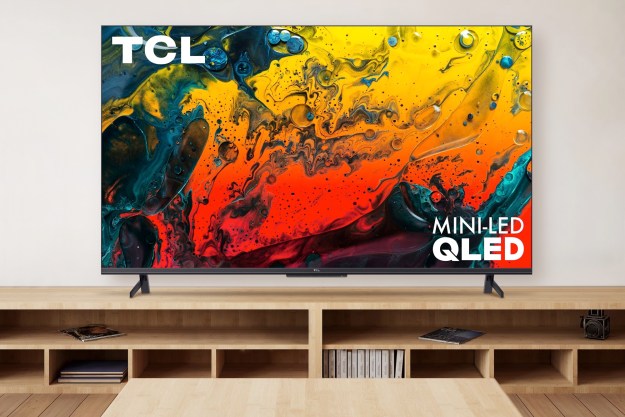While you may have scoffed at the title of this article, when buying a TV stand, there are many important considerations beyond mere style and color. As you shop for your display’s new throne, you’ll need to consider how much space you need for equipment, how the stand manages cables, the size of the stand, and more. Your home theater experience rests (quite literally) on this purchase, so here’s a quick rundown of how you can find the stand that’s right for you.
Cut the clutter
Think about all the equipment your stand will need to accommodate, for starters. You may have an A/V receiver, Blu-ray player, center channel speaker, set-top box, etc., that must be stored under the TV. Remember: Equipment can overheat if there isn’t enough room for it to breathe, so be certain there is ample room for all the devices to fit while also allowing for airflow.
While we’re on the topic of gear, one aspect of TV stands too often forgotten is cable clutter. Once you place all your equipment in the stand, there will be many cables to connect to both the TV and wall sockets. TV stands with closed backs keep cable clutter out of sight, but you’re going to need enough holes for wire management. You can minimize the need for large holes by using thinner cables, but speaker wire tends to take up a lot of space. Another option is open-backed TV stands, which place little restriction on wiring up your system, but they also show all the wires. If you go with this style, plan to use zip ties or Velcro cable ties to keep your cables orderly.
Which electronics will fit?
Consider the type of equipment you have when you are mapping out your new stand. Will your remotes need to see the electronics to work? Most electronics still use infrared eyes to receive remote signals. Rather than having to open cabinet doors every time you watch TV, consider a stand with darkened glass doors (or spaced wooden slats) that let that remote signal through.
Think about the size of your TV and how big of a TV stand you will need. Make sure the top of the TV stand is deep and wide enough to hold your TV. You may also want to have some space to spare, both for aesthetics (you don’t necessarily want a stand that’s no wider than your display) and for “future-proofing.” TVs are getting bigger and better all the time, and you don’t want to have to replace your stand every time you upgrade the screen that sits atop it. That segues nicely into another consideration: Durability. A robust surface like glass or metal will be able to take more abuse than wood or laminates, so if you have little tykes running around or you’ve been known to set a glass down sans coaster (cringe), you may want to go with something a bit more rugged.
Also, the wider the TV stand, the more structural support it needs to stay in shape. Heavy TVs and amplifiers will bow wooden stands without rigid construction and, no matter how slick your stand, a sagging center is not a good look. Glass stands tend to hold their shape better, so if your display is a true behemoth, that may be the way to go.
Some stands offer a mounting bracket so the TV appears to float. These stands minimize the need for surface area and can be much smaller than conventional entertainment centers. If you are converting a wall-mounted TV to one that will sit on the furniture, but you lost the stand or legs that came in the box, there are universal TV stands that attach to the VESA mounting holes on the back of a TV.
Keeping all this in mind, you should have no problem picking the perfect TV stand that will last you for years to come, even if the screen that sits on top (and the tech that fits within) is continually changing.
This video features the BDI Corridor Entertainment Stand, available at retailers throughout the U.S.
Editors' Recommendations
- Best Buy TV deals: Save on QLED TVs, OLED TVs, and 8K TVs
- Best Buy expands its affordable Xumo TV lineup with Pioneer-branded models
- Fire TV Stick vs. Fire TV Stick 4K Max vs. Fire TV Cube: Which to buy?
- What is a smart TV? Everything you need to know
- How to buy a refurbished TV: Everything you need to know




